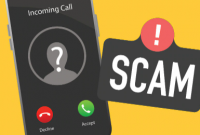Do you want to know whether you are able to get your federal student loans forgiven for your service as a teacher in low income schools? Please learn about the Teacher Loan Forgiveness Program to check whether you qualify.
Student Loan Forgiveness for Teachers in Low-Income Schools
Under the program of Teacher Loan Forgiveness, if you teach full time for 5 complete and consecutive academic years in a low income school or educational service agency, and meet other qualifications, then you may be eligible for forgiveness of up to $17,500 on your Direct Subsidized and Unsubsidized Loans, and also your Subsidized and Unsubsidized Federal Stafford Loans.
If you have a Direct Consolidation Loan, you may be eligible for forgiveness of the outstanding portion of the consolidation loan which repaid an eligible Direct Subsidized Loan, Direct Unsubsidized Loan, Unsubsidized Federal Stafford Loan or Subsidized Federal Stafford Loan.
Borrowers cannot receive credit toward Teacher Loan Forgiveness and Public Service Loan Forgiveness (PSLF) for the same period. It means that if you seek and receive Teacher Loan Forgiveness, the 5-year period of service that supported your eligibility will not count toward Public Service Loan Forgiveness (PSLF). We suggest you consider whether you are interested in Public Service Loan Forgiveness (PSLF) before deciding to pursue Teacher Loan Forgiveness, because they cannot make the changes after you receive forgiveness.
Keep in mind that the limited Public Service Loan Forgiveness (PSLF) waiver temporarily waives this restriction for individuals that previously received Teacher Loan Forgiveness. For more information about that, you are able to learn more about the limited PSLF waiver.
What are the Eligibility Requirements?
Here are some eligibility requirements:
- You do not have an outstanding balance on Direct Loans or FFEL (Federal Family Education Loan) Program loans since October 1, 1998, or on the date that you got a Direct Loan or FFEL Program loan after October 1, 1998.
- You must have been employed as a full-time and highly qualified teacher for 5 complete and consecutive academic years, also at least one of those years must have been after the 1997–1998 academic year.
- You must have worked at a secondary school, elementary school, or educational service agency which serves the low-income students, a low-income school or educational service agency.
- Loans for which you are searching forgiveness should have been made before the end of your 5 academic years of qualifying teaching service.
How Do I Know If I am Teaching at a Low Income School?
The school or educational service agency has to be listed in TCLI (Teacher Cancellation Low Income) Directory, which is published by the United States Department of Education each year. To know if your school or educational service agency is classified as a low income school, then you are able to search the directory database for the years you have been employed as a teacher. If the TCLI (Teacher Cancellation Low Income) Directory is not available before May 1 of any year, the previous year’s directory can be used for that year.
Any questions regarding the inclusion or omission of a particular school has to be directed to the state education agency contact in the state where the school is located and not to the Department of Education (ED). State education agencies are responsible to determine which schools or educational service agencies are eligible to be reported to the Department of Education (ED) for inclusion in the TCLI (Teacher Cancellation Low Income) Directory.
If your school is included in the TCLI (Teacher Cancellation Low Income) Directory for at least 1 year of your teaching service, however it is not included during subsequent years, then your subsequent years of teaching at the school or educational service agency is going to be counted toward the required 5 complete and consecutive academic years of teaching. For instance, if you taught at the same school for 5 complete and consecutive academic years from 2011–2012 through 2015–2016, but the school was included in the TCLI (Teacher Cancellation Low Income) Directory only for the 2011–2012 academic year, then your subsequent four academic years of teaching at that school may still be counted toward the required 5 complete and consecutive academic years.
Need to know that teaching service performed at the educational service agency will be counted toward the needed 5 years of teaching just if the consecutive 5-year period includes qualifying service at the eligible educational service agency performed after the 2007 – 2008 academic year. All elementary and secondary schools which are operated by BIE (Bureau of Indian Education) or operated on Indian reservations by Indian tribal groups under contract with BIE, qualify as the schools serving low-income students. Those schools are qualifying schools for the purposes of this loan forgiveness program, even though they are not listed in the TCLI (Teacher Cancellation Low Income) Directory.
How Much Loan Forgiveness Can I Receive?
So, how much loan forgiveness can you receive? The maximum forgiveness amount is $17,500 or $5,000, depending on the subject area taught. If you have eligible loans under the Direct Loan Program and the Federal Family Education Loan (FFEL) program, $17,500 or $5,000 is a combined maximum forgiveness amount for both programs.
You are going to receive up to $17,500 in loan forgiveness if:
- You were a highly qualified full-time mathematics or science teacher who taught the students at the secondary school level.
- You were a highly qualified special education teacher (at the elementary or secondary level) whose primary responsibility was to give special education to children with disabilities, and you taught the children with disabilities who corresponded to your area of special education training and demonstrated knowledge and teaching skills in the content areas of the curriculum which you taught.
If you did not teach science, mathematics, or special education, you will be able to receive up to $5,000 in loan forgiveness if you were a highly qualified full-time elementary or secondary education teacher.






